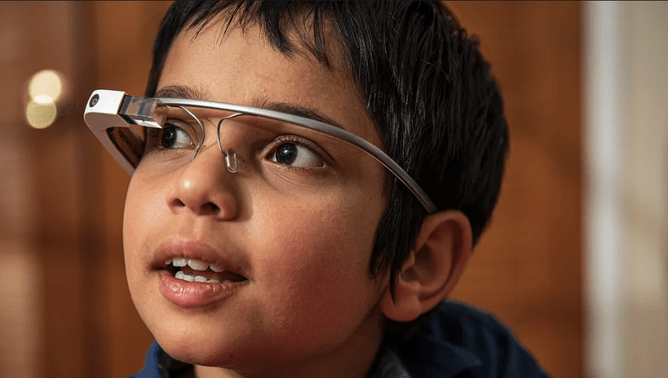The concept of wearable AR or smartglasses only started to feel more like reality in 2013 when Google launched Google Glass to specially selected “Glass Explorers”. A year later, they followed up with a product available to the public although it had a rocky start as the experience of either wearing or interacting with someone wearing Google Glass was not great.
If you weren't familiar with the Google Glass journey, watching Tony Stark and Peter Parker go about their day job, you might think that advanced smart glasses have been around for years.
It is true that smart glasses in some form or other have been available for a long time. Our friends at Gravity Industries certainly showed us how a heads up display using this technology, helped get a Guinness World Record in 2017. But until recently the capabilities of these devices has fallen way short of what we see in the movies.
But we are now seeing the technology mature. Smart glasses are finding applications in the medical and manufacturing or service industries. It’s been a long time coming, and we are closer today than we have ever been.
So we asked Mark, Technology Director at The Imagination Factory, for his thoughts on the latest technology.
O1_WHEN DID YOU FIRST COME ACROSS SMART GLASSES
I first became aware of Smart glasses in 2006 when I was working on a futures concept that was a mobile phone that had a pair of smart sunglasses that were integrated into it. The lenses of the glasses were the screen of the mobile phone but you could also take them out, put them on and they turned into smart glasses.
O2_WHAT WERE THEY USED FOR 20 YEARS AGO?
Back then they were mostly used in science fiction movies and used as futures concepts in trends reports. The technology was very much still in the R&D stage and being developed in various labs.
O3_HAS IT CHANGED MUCH SINCE THEN?
The whole world of smart glass technology has changed enormously since then.
- advances in the lens technology (often called waveguides)
- miniaturisation of the electronics that drive the whole technology
- projectors that show the image have come down to the size of a grain of rice
- all working towards making something that you don’t mind wearing on your face
O4_WHAT'S YOUR FAVOURITE APPLICATION?
Something that researchers at Stanford University worked on for children with Autism who can wear these 'super power' glasses and be assisted to understand facial expressions.The camera has been trained to understand people's expressions so that the glasses can help the child interpret what they are seeing.
Because it’s being used in the home context, children don’t have to wait for a practitioner to learn, they can be learning as part of their day to day life.
If you want to know more about smart glasses, try these:
A smart 4th industrial revolution
How to avoid looking like a plonkAR
If you'd like our input to develop a smart glasses application, please contact Mark on mark@imaginationfactory.co.uk


